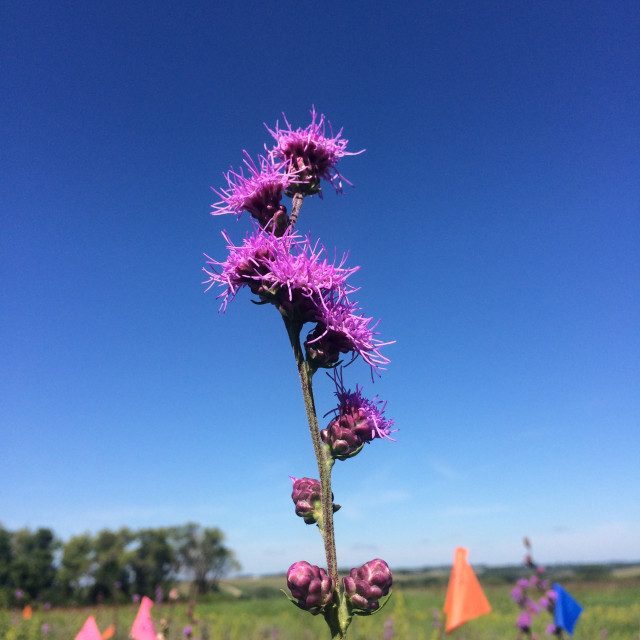COMMON NAME
Rough blazing star
SCIENTIFIC NAME
Liatris aspera
ALSO KNOWN AS
Tall blazing star
Plant family
Aster (Asteraceae)
Plant group
Wildflowers and Herbs
Rough blazing stars are herbaceous perennial plants that produce stems with purple flowers and are native to eastern US and Canada.
80 reports
9+
OBSERVERS
80+
OBSERVATIONS
Identification hints
If flowering, rough blazing stars typically have between 10 and 30 flower heads that attach directly from their base to the flowering stem. If the flowering heads have stalks between the head and the main stem it is likely a different species in the same genus.
Did you know?
The rough feel of this plant comes from stiff white hairs along the stem. The species name 'aspera' is latin for 'rough'. The flowers of Rough blazing star tend to bloom in August and early September. The seeds often ripen in October and November.
DISTRIBUTION IN TH U.S.
Alabama
,
Arkansas
,
Florida
,
Georgia
,
Iowa
,
Illinois
,
Indiana
,
Kansas
,
Kentucky
,
Louisiana
,
Michigan
,
Minnesota
,
Missouri
,
Mississippi
,
North Carolina
,
North Dakota
,
Nebraska
,
New York
,
Ohio
,
Oklahoma
,
South Carolina
,
South Dakota
,
Tennessee
,
Texas
,
Virginia
,
Wisconsin
,
West Virginia
HABITAT
Rough blazing stars are typically found in prairie habitat.
ATTRIBUTES
Leaves
Leaves are very narrow with a central vein and are longer at the base of the flowering stalk. The leaves look grasslike and get shorter as they climb up the flowering stalk. In non-flowering years, this plant is hard to spot because there are no stems and the leaves camouflage well with prairie grasses.
Flowers
25-40 individual florets are clustered together to form one flowering head. Each flowering stem typically has 10-30 flowering heads. The color is usually light purple but can also be white or pink.
Fruits
The fruits of this species are called achenes and are wind dispersed. Each achene looks similar to a coriander seed with a tuft of brown hairs attached to one end. Every floret produces an achene even if there is no seed inside.
Bloom Time
Flowers can begin blooming as early as late July and may continue into mid-September.
See Menu
- 2021 Chicago Botanic Garden. All Rights Reserved.
-
Creative Commons
BY-NC-SA 4.0 - Terms of Use
- Privacy Policy
- Data Sharing and Citation Policies
- 2021 Chicago Botanic Garden. All Rights Reserved.



